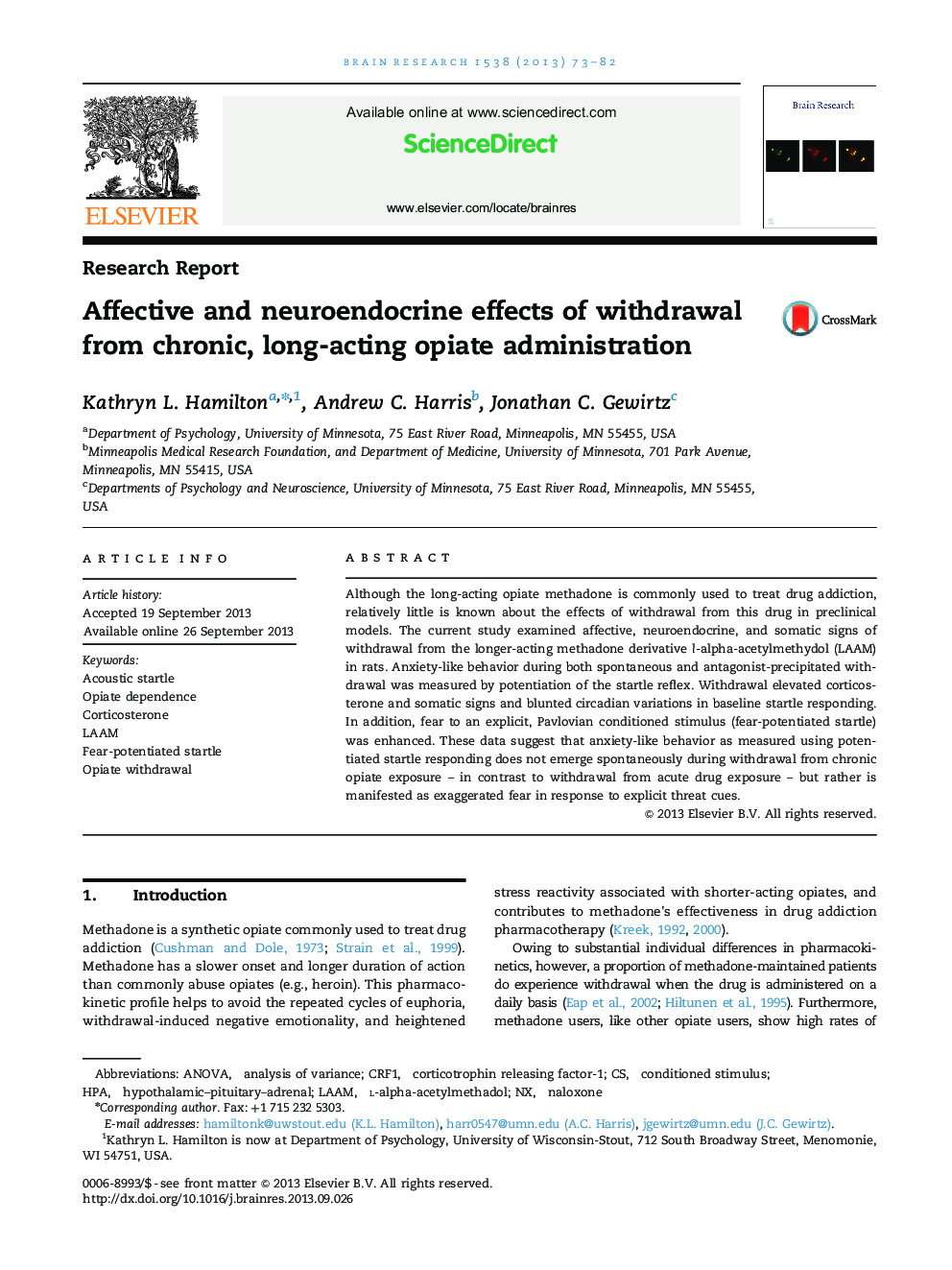| Article ID | Journal | Published Year | Pages | File Type |
|---|---|---|---|---|
| 6263681 | Brain Research | 2013 | 10 Pages |
â¢Effects of withdrawal from the long-lasting opiate LAAM were evaluated in rats.â¢Circadian variation of the startle reflex was blunted during LAAM withdrawal.â¢Corticosterone levels were elevated during LAAM withdrawal.â¢Fear-potentiated startle was elevated during LAAM withdrawal.â¢LAAM withdrawal produced neuroendocrine, circadian, and anxiety-like effects.
Although the long-acting opiate methadone is commonly used to treat drug addiction, relatively little is known about the effects of withdrawal from this drug in preclinical models. The current study examined affective, neuroendocrine, and somatic signs of withdrawal from the longer-acting methadone derivative l-alpha-acetylmethydol (LAAM) in rats. Anxiety-like behavior during both spontaneous and antagonist-precipitated withdrawal was measured by potentiation of the startle reflex. Withdrawal elevated corticosterone and somatic signs and blunted circadian variations in baseline startle responding. In addition, fear to an explicit, Pavlovian conditioned stimulus (fear-potentiated startle) was enhanced. These data suggest that anxiety-like behavior as measured using potentiated startle responding does not emerge spontaneously during withdrawal from chronic opiate exposure - in contrast to withdrawal from acute drug exposure - but rather is manifested as exaggerated fear in response to explicit threat cues.
